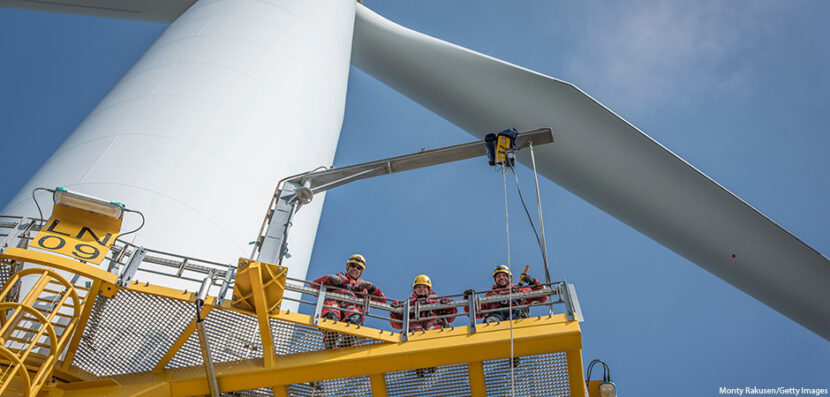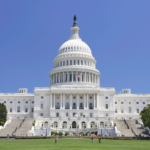- Current Events Nebraska Rejects Winner-Take-All Proposal
- Citizenship Voting Under Age 18
- Citizenship Citizenship in Action
- Democratic Party Biden’s and Trump’s Recent Primary Results
- Elections Trump and Biden Win South Carolina and Michigan Primaries
- Democratic Party Trump and Biden Win Big in Early February Contests
Biden Announces Offshore Windfarm Plan
If you have taken a road trip across the United States, you may have seen giant wind turbines along the highways. There are clusters of turbines all across the country. Recently, the Biden administration announced a plan to develop new wind farms offshore (in coastal waters). But what are the specifics of the plan, and what are the advantages and disadvantages of this kind of development? Here, Election Central takes a closer look.
What is the Plan?
The Biden administration is concerned that fossil fuel use is a major contributing factor to climate change. The administration’s goal is to reduce the nation’s reliance on those fuels by getting thirty gigawatts (GW) of wind energy online by 2030 through the development of floating offshore wind farms. This is enough to power five million homes with clean energy. The plan will cost about $30 million, which will come from the bipartisan Infrastructure Law that Congress passed in 2021. Eventually, Biden’s goal is to reach one hundred percent clean energy by 2035. The administration says this will lower energy costs for American homes and businesses by seventy percent. The plan aims to reach net-zero emissions by 2050.
Right now, wind energy accounts for just nine percent of the total energy generated in the United States And there are only two offshore wind farms in operation. One is off the coast of Rhode Island. The second is 25 miles east of Cape Henry, Virginia. The energy generated by these offshore wind farms comes from wind turbines attached to platforms fixed to the bottom of the ocean. That works in shallow spots. The new initiative will focus on creating floating platforms, which are necessary for deep-water areas. Experts estimate that two-thirds of the country’s potential wind energy comes from deep-water spots off the coasts of Oregon, California, and Maine. All the parts for the turbines and platforms will be American made. Offshore windfarms will create an estimated 77,000 union jobs. But the work is also dangerous, and often requires being away at sea for weeks or months at a time.
What are the Challenges?
These offshore wind energy platforms can cause environmental impacts to the ocean’s animals. To address this, money has been set aside by the Biden administration to research animal behavior and to develop deterrents to help limit the turbines’ impact on local wildlife, including bats and marine mammals.
Another challenge is how to get the generated wind energy safely to shore and transmitted to the electrical system. This is done through submarine export cables. But installing these cables can be tricky. The cables need to be routed in a way that doesn’t disrupt the local marine environment and avoids protected areas, underwater canyons, and high-traffic shipping areas. Once the cables are installed, they must be monitored and protected from potential damage.



